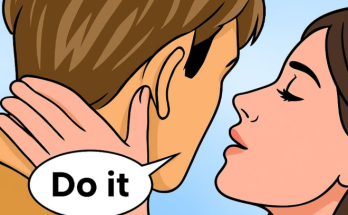The Peach Illusion: How Our Minds Play Tricks on Us
Have you ever looked at a picture online—a plump, glowing peach, soft and fuzzy—and felt almost certain you could reach out and taste it? Only to realize, seconds later, that what you were admiring wasn’t a fruit at all but something entirely different, perhaps even human skin, a cleverly designed object, or a digital illusion? That, in essence, is the “Peach Illusion” — a perfect example of how our brains construct reality not from what is, but from what we expect to see.
The Peach Illusion is more than a social media trend or a quirky trick of perception; it’s a window into the fascinating and fallible machinery of the human mind. It reveals how our brains interpret the world through shortcuts, assumptions, and emotional associations rather than pure observation. From optical illusions to everyday misunderstandings, our minds are constantly balancing between what’s real and what feels real.
Seeing Is Believing — Or Is It?
Vision feels effortless. We open our eyes, light floods in, and the world appears, rich with color and shape. But behind that seamless experience lies a storm of neurological guesswork. The brain doesn’t passively receive images; it constructs them from limited information. The eyes capture fragments of light and color, and the brain fills in the gaps based on memory, context, and expectation.
That’s why a peach-colored circle with the right lighting can seem like a real fruit, or why two identical shades appear different depending on their background. The Peach Illusion capitalizes on this tendency. When we see an image that suggests softness, warmth, and roundness, our brains trigger the same response as when we actually see a ripe fruit.
In a way, we don’t see the world as it is; we see it as our brains predict it to be. Psychologists call this process top-down perception—our interpretations are influenced by prior experience and knowledge. So when you see something that looks sort of like a peach, your brain takes a shortcut: “Close enough. That’s a peach.”
The Science of Illusion
The Peach Illusion isn’t new. It’s part of a long tradition of cognitive phenomena where perception deviates from reality. Optical illusions, such as the famous Rubin’s Vase (where you see either two faces or a vase depending on your focus), rely on the same mechanisms. The brain loves patterns and dislikes ambiguity. Faced with uncertainty, it chooses the most familiar option.
In neuroscience, this is explained by predictive coding. The brain constantly generates models of what it expects to see and updates them based on sensory input. When something fits the model—even imperfectly—the brain accepts it as truth. That’s why illusions work: they exploit our brain’s confidence in its own guesses.
Interestingly, this doesn’t just apply to sight. Similar illusions exist for sound (like the “Yanny or Laurel” debate), touch (phantom limb sensations), and even taste and smell. Our perceptions are active interpretations, not direct recordings. The Peach Illusion, then, is less about peaches and more about the fragile bridge between sensation and understanding.
Social Media and the Illusion Era
The digital age has amplified our susceptibility to illusions. Filters, photo editing, and visual tricks flood our feeds daily. A perfectly airbrushed photo can make skin look smoother than reality, a sunset look richer than the sky itself. The Peach Illusion thrives in this environment, where visual suggestion meets digital manipulation.
Platforms like Instagram and TikTok have turned these perceptual quirks into viral entertainment. Artists and photographers intentionally design images that hover between categories—fruit or skin, object or body part, real or rendered. Our brains rush to make sense of it, but the ambiguity is the point. It keeps us looking longer, reacting stronger, and sharing faster.
What’s fascinating—and slightly unsettling—is how these illusions reveal our biases. Many “peach” illusions go viral because they flirt with human sensuality. The color, texture, and curvature evoke associations with human bodies. Our brains, guided by emotion as much as logic, fill in the blanks. It’s a reminder that perception is as psychological as it is physical.
When Illusion Becomes Reality
The Peach Illusion also speaks to a deeper philosophical truth: the line between illusion and reality is thinner than we’d like to admit. Our daily experiences are full of perceptual “peaches” — things we think we understand until a closer look proves otherwise.
For instance, think about how you perceive other people. We often make instant judgments based on appearances or expressions, assuming we “know” someone after seconds of observation. In truth, these are mental shortcuts, no different from seeing a fruit where there is none. Similarly, advertisements, political imagery, and even news headlines use “perceptual priming” to shape how we interpret reality before we consciously process it.
This is why illusions matter beyond entertainment. They show that perception is subjective, shaped by personal history, emotion, and bias. The same image can mean entirely different things to different people. For one viewer, a peach might trigger thoughts of summer and sweetness; for another, it might evoke embarrassment or humor. The difference lies not in the image but in the mind behind the eyes.
The Beauty of Being Fooled
While it’s easy to feel deceived by illusions, they also highlight something wonderful about the human mind: its creativity. Our brains are storytellers. They take incomplete information and weave it into something coherent, meaningful, and sometimes beautiful. The very mechanism that leads to errors in perception also enables imagination, empathy, and art.
Artists throughout history have exploited this duality. Renaissance painters used perspective tricks to make flat canvases appear three-dimensional. Surrealists like Salvador Dalí played with visual paradoxes to challenge viewers’ sense of reality. Today, digital artists continue that legacy with hyperreal illusions like the Peach phenomenon—modern echoes of an ancient fascination with how easily we can be deceived.
To see a peach where there is none isn’t just a failure of perception—it’s proof of our brain’s powerful drive to interpret and create. We fill the gaps not because we’re foolish, but because we’re human.
Learning from the Peach Illusion
So, what can the Peach Illusion teach us beyond amusement? First, it reminds us to slow down. The world we perceive is filtered through layers of assumption and desire. Pausing before we react—whether to an image, a rumor, or a first impression—gives us a chance to question what’s real.
Second, it encourages humility. If our senses can be fooled so easily, perhaps our opinions and certainties deserve the same scrutiny. Recognizing our perceptual limits is the first step toward clearer thinking.
Finally, it invites wonder. There’s something deeply human about being tricked and delighted by an illusion. It shows that our minds, for all their flaws, are astonishing instruments—capable of turning a few pixels or brushstrokes into a vivid experience of color, warmth, and emotion.
Conclusion: The Mind’s Peach
The Peach Illusion is more than a viral curiosity—it’s a mirror held up to the mind itself. It reveals how we live inside interpretations, not raw reality; how our brains constantly balance accuracy and imagination. Every illusion is a reminder that truth isn’t always visible at first glance.
So the next time an image tricks your eyes—a peach that isn’t a peach, a color that shifts, a shadow that moves—take a moment to appreciate the quiet miracle happening behind your vision. You’re not just seeing the world; you’re creating it, one beautiful illusion at a time.


